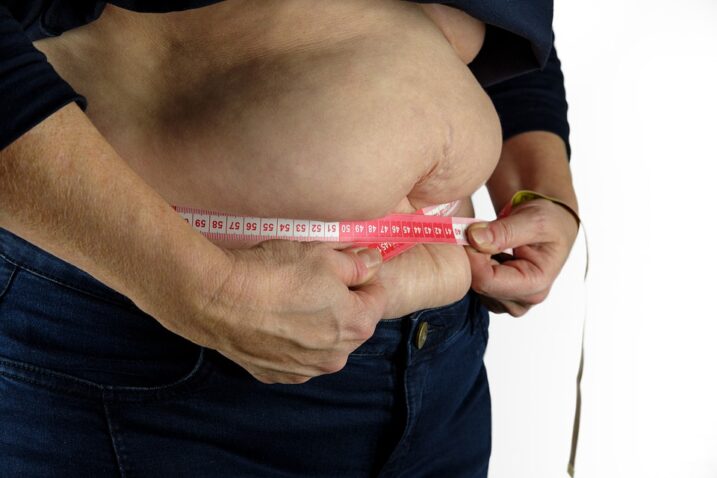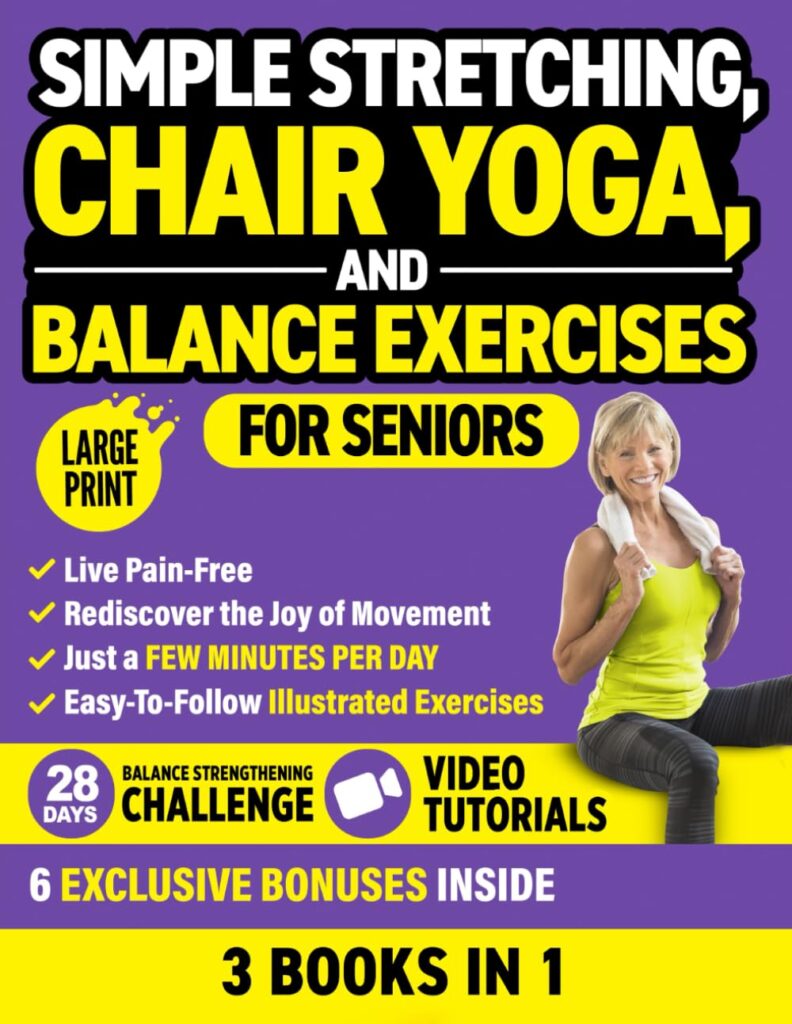Is there truly a best exercise to get rid of belly fat, or does it just build muscle? Are there any exercises to get rid of belly fat for seniors? Have you ever wondered why all your best efforts to exercise to lose belly fat never seem to produce results?
This article attempts to answer these questions and presents a holistic perspective that must be accompanied by mini habits that will better assist you to reach the desired goal.
Exercise to Get Rid of Belly Fat – Is this Possible?
Exercise can indeed help reduce belly fat, but understand that spot reduction—targeting fat loss in a specific area of the body—is a myth.
When you exercise, your body burns fat from all over, not just the area you’re targeting. However, regular exercise, particularly cardiovascular exercises like running, cycling, or swimming, can help burn calories and reduce overall body fat, including belly fat.
Additionally, strength training exercises that target the core muscles can help tone and tighten the abdominal area, giving the appearance of a slimmer waistline.
Combine these exercises with a balanced diet that is rich in whole foods and low in processed foods and sugary drinks for optimal results to combat middle age spread.
Ultimately, while exercise can play a significant role in reducing belly fat, it is essential to approach it as part of a holistic lifestyle change that includes healthy eating habits and regular physical activity.
What is the Core?
The core refers to the central region of the body, made up of a group of muscles that provide stability, support, and movement to the abdomen, lower back spine, pelvis, and hips.
These muscles work together to facilitate various movements, improve overall stability and maintain proper posture.
Where Belly Fat is Deposited
Belly fat (visceral fat or abdominal fat) is typically deposited in the abdominal cavity, surrounding the internal organs such as the liver, pancreas, and intestines.
This type of fat is different from subcutaneous fat, which is found just beneath the skin and is responsible for the “pinchable” fat in areas like the thighs and arms.
The deposit of belly fat occurs when excess calories are consumed and not adequately burned off through physical activity.
These excess calories are stored in fat cells throughout the body, including the abdominal region, as triglycerides.
However, visceral fat tends to accumulate more readily in the abdominal cavity due to several factors, including genetics, hormones, and your lifestyle choices.
Excess belly fat is not only a cosmetic concern but also a risk factor for various health conditions, including type 2 diabetes, heart disease, and metabolic syndrome.
Therefore, the best exercise to get rid of belly fat or reduce it alone will not have much of an impact without a combination of healthy eating, regular exercise, and stress management.
Regular Exercises
Cardiovascular exercises like running, cycling, and swimming are effective for burning calories and reducing overall body fat, including belly fat. These exercises increase heart rate and metabolism, promoting fat loss throughout the body.
High Intensity Interval Training – Exercise to Lose Belly Fat
A high-Intensity Interval Training (HIIT) workout is a helpful form of cardiovascular exercise to get rid of belly fat. It alternates between short bursts of intense activity and brief periods of rest or low-intensity recovery.
They are designed to maximize calorie burn and improve cardiovascular fitness in a shorter amount of time compared to traditional steady-state cardio exercises.
These workouts typically involve performing exercises at near-maximum effort for a set duration, followed by a period of active recovery or rest.
HIIT workouts can include a wide variety of exercises, such as sprinting, jumping jacks, burpees, mountain climbers, and kettlebell swings.
These workouts can be targeted to various areas of the body depending on the exercises included in the routine.
While many HIIT workouts involve full-body movements that engage multiple muscle groups simultaneously, it is also possible to target specific areas of the body by incorporating exercises that focus on those muscle groups.
For example, if you want to target your lower body, you might include exercises like squats, lunges, or jumping rope in your routine. To focus on the upper body, exercises like push-ups, pull-ups, or dumbbell rows can be incorporated.
In addition, core-focused HIIT exercises such as plank variations, bicycle crunches, or Russian twists can target the abdominal muscles.
Overall, HIIT workouts offer a versatile and efficient way to improve cardiovascular health, increase strength, and burn calories while allowing for targeted muscle engagement in specific areas of the body.
This method has been shown to effectively burn calories and boost metabolism, leading to greater fat loss.
Strength Training Exercises
Strength training exercises are instrumental in reducing belly fat by building muscle mass, boosting metabolism, and improving overall body composition.
Here are several effective strength training exercises specifically targeting the abdominal area:
Plank: Planks engage the entire core, including the rectus abdominis, transverse abdominis, and obliques. Holding a plank position strengthens these muscles, improving stability and posture, which contributes to a leaner midsection.
Crunches: Crunches primarily target the rectus abdominis, commonly known as the “six-pack” muscles. By contracting and flexing the abdominal muscles, crunches help to tone and define the midsection.
Russian Twists: This exercise targets the oblique muscles, which run along the sides of the abdomen.
By twisting from side to side while holding a weighted object, such as a dumbbell or medicine ball, Russian twists strengthen the obliques, enhancing core stability and definition.
Bicycle Crunches: Bicycle crunches engage both the rectus abdominis and oblique muscles simultaneously.
By incorporating a twisting motion and alternating leg movements, this exercise effectively targets the entire abdominal area, promoting muscle growth and fat loss.
Leg Raises: Leg raises primarily target the lower abdominal muscles. By lifting the legs while lying flat on the back, this exercise strengthens the lower abs, improving core strength and stability.
Deadlifts: While not solely targeting the abdominal muscles, deadlifts engage the entire body, including the core.
This compound exercise promotes overall strength and muscle growth, leading to increased calorie expenditure and fat loss throughout the body, including the belly area.
Incorporating these strength training exercises into a comprehensive workout routine can help you effectively reduce belly fat and achieve a leaner, more toned midsection when combined with a balanced diet and regular cardiovascular exercise.
Is There a Best Exercise to Get Rid of Belly Fat for Seniors?
While there is not a single “best” exercise to get rid of belly fat for seniors, and neither are there any “magic pills” to do the same, there are several types of exercises that can be effective and safe for older adults looking to reduce abdominal fat:
Walking: Walking is a low-impact cardiovascular exercise that can help burn calories and reduce overall body fat, including belly fat. It’s gentle on the joints and can be easily incorporated into daily routines.
Strength Training: Building muscle mass through strength training exercises can help increase metabolism and burn more calories, contributing to fat loss. Focus on exercises that target the major muscle groups, including the core, legs, arms, and back.
Yoga: Yoga combines physical postures, breathing techniques, and meditation to improve flexibility, strength, and stress management. Certain yoga poses, such as plank, boat pose, and warrior poses, engage the core muscles and can help tone the abdominal area.
Swimming: Swimming is a low-impact, full-body workout that provides cardiovascular benefits while being easy on the joints. It can help burn calories and strengthen muscles, including those in the abdomen.
Pilates: Pilates focuses on core strength, stability, and flexibility through controlled movements and proper alignment. It can help improve posture and tone the abdominal muscles, leading to a slimmer waistline.
Interval Training: High-intensity interval training (HIIT) workouts can be modified for seniors by incorporating low-impact exercises and shorter intervals of high-intensity activity followed by periods of rest. This can help boost metabolism and burn belly fat effectively.
Seniors are encouraged to consult with a healthcare professional before starting any new exercise program, especially if they have pre-existing health conditions or concerns.
Conclusion – Exercise to Get Rid of the Middle Age Spread
In conclusion, finding the right exercise to lose belly fat is not a one-size-fits-all approach, especially for seniors. Keep in mind that whatever exercises you do, and do consistently will help with your overall trimness – including around your midsection.
With a combination of cardiovascular exercise, strength training, flexibility work, and mindfulness practices like yoga and Pilates, seniors can effectively target abdominal fat while improving overall health and well-being.
By staying active and making exercise a priority, seniors can not only shed unwanted belly fat but also boost energy levels, improve mobility, and enhance quality of life for years to come.
Whether it is a leisurely stroll around the neighborhood, a gentle yoga session in the living room, or a refreshing swim at the local pool, there are plenty of enjoyable and accessible options for seniors to incorporate exercise into their daily routines.
So, lace up those sneakers, roll out the yoga mat, and embark on a journey towards a healthier, happier, and trimmer waistline through the power of exercise to lose belly fat.
Related Articles
- Foods That Keep Your Heart Healthy – What to Avoid
- Foods that Help Burn Belly Fat – How to Use This Information
- How to Lose Fat Quickly – 4 Healthy Fats to Eat
- Belly Fat and Aging – How to Manage it Effectively
- Belly Fat and Heart Disease – The Connection and Risk Factors





